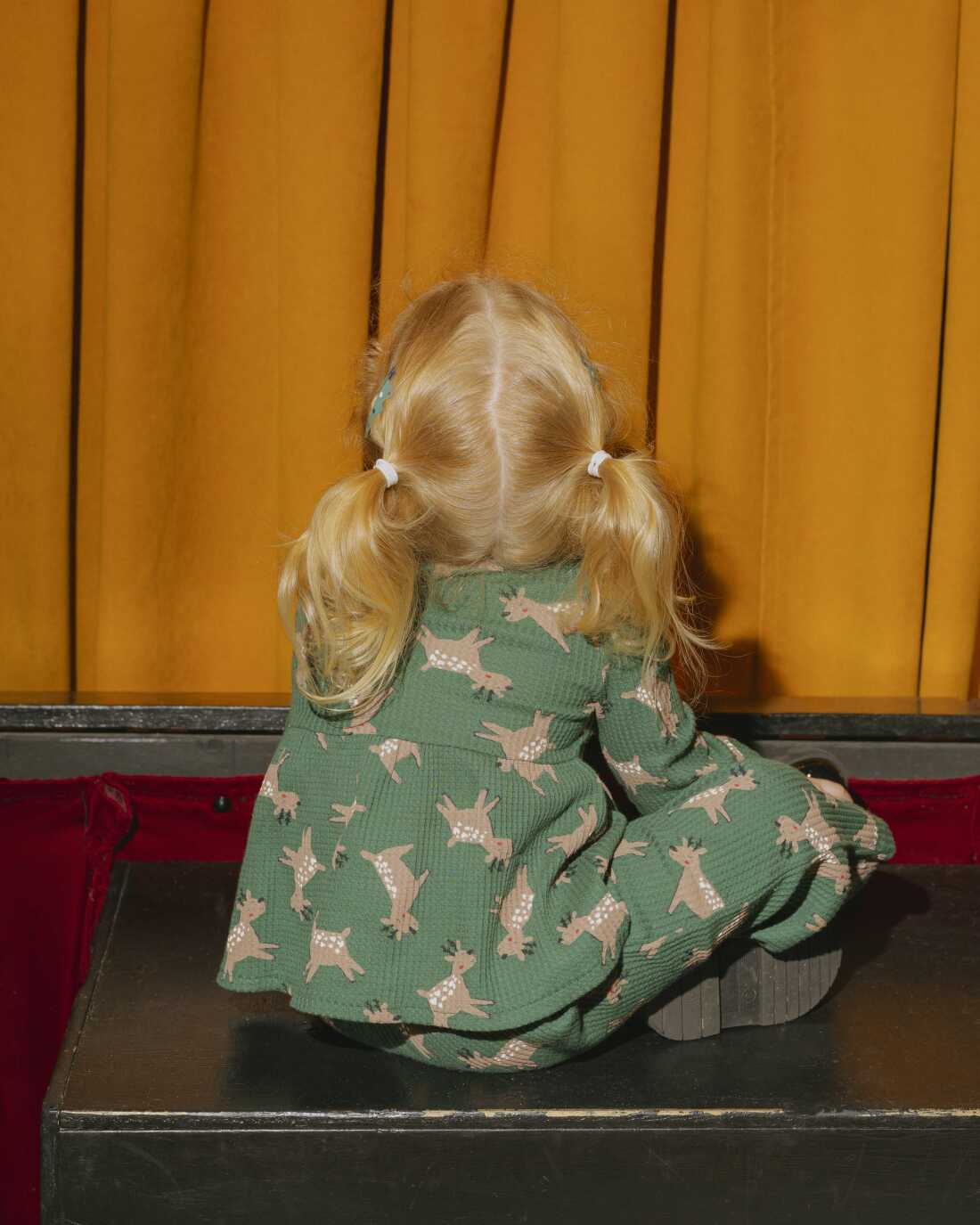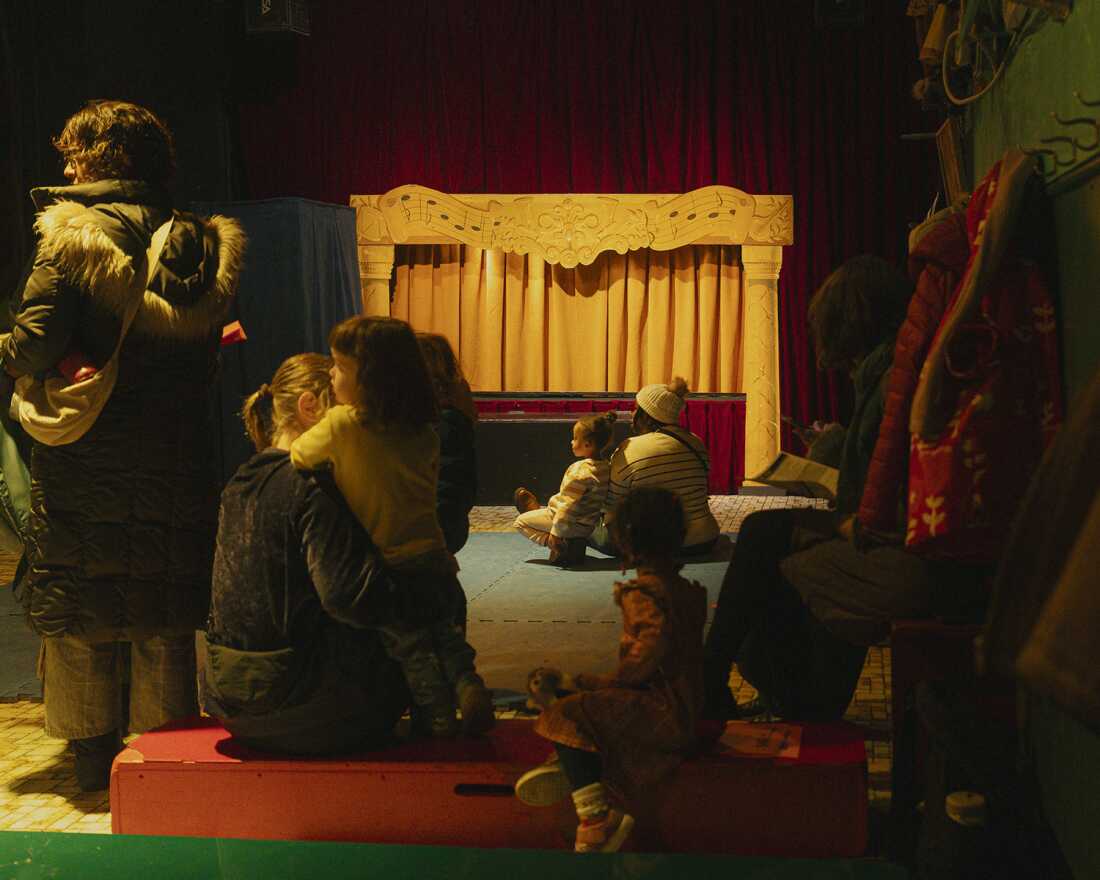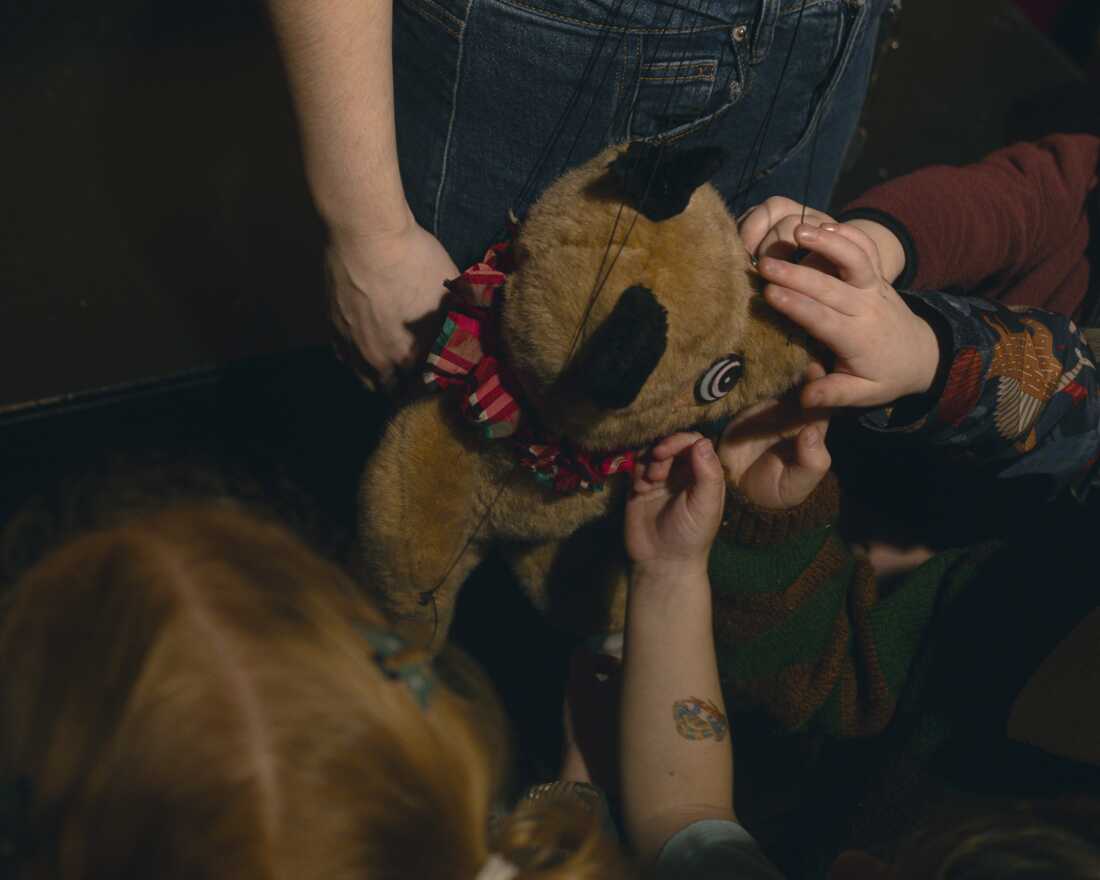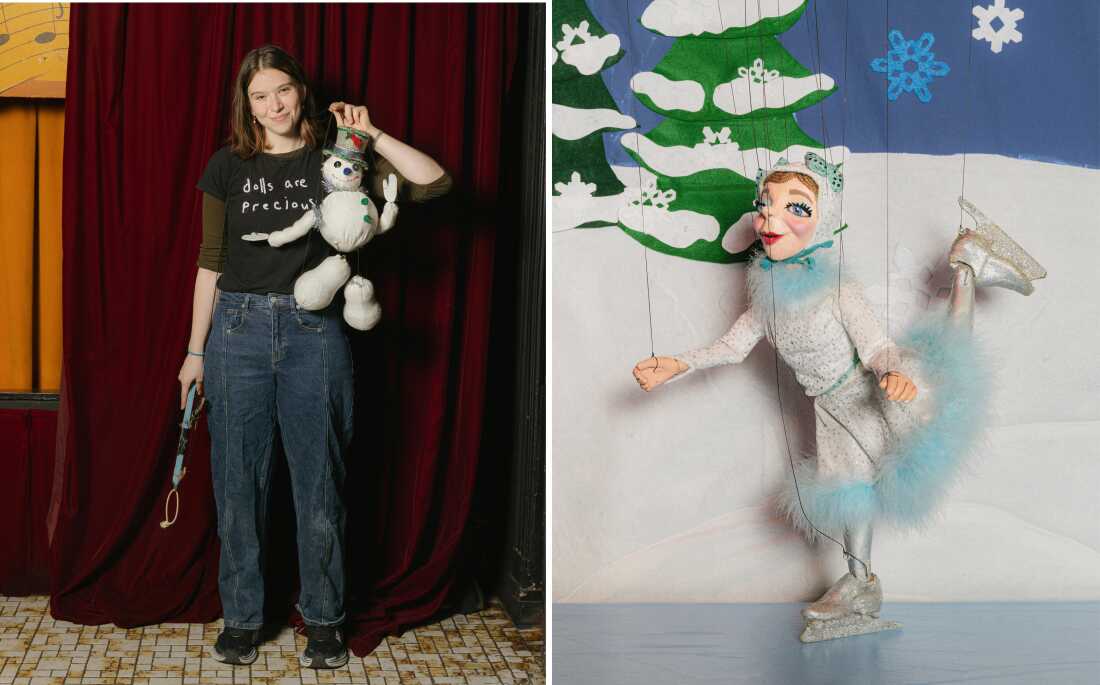Lifestyle
What Is a Sundress?

Something strange unfolds online each spring. As the warmer months approach, many men seem compelled to post about the allure of a woman in a sundress. The simple wardrobe staple has long been a point of inexplicable obsession, but this year, people are asking questions.
Why do some men get so excited to see sundresses? Wait — do men even know what a sundress is? Does anyone know what a sundress is? As social media flooded with responses, it became clear that no one could quite agree on what made a sundress a sundress (as opposed to a slip dress, a day dress, a shift dress, a shirtdress, a caftan, a tube dress or a nap dress).
So we want to unravel this thread a bit, and ask you, the reader, to answer the question at hand: What is a sundress?
Many people say sundresses are bright and floral, maybe blue or yellow. White is widely accepted. Pastels are classic. Black is divisive. No one really talks about gray.
On the resale platform Depop, a seller named Bianca Steele listed a “Boho Black Sundress 100% Viscose sundress made in India.” The inky maxi was “most definitely” a sundress, Ms. Steele wrote over the in-app messenger, adding that she had personally enjoyed black sundresses for over four decades. She currently owns at least 10.
But Jeannie Stith, the chief executive of Color Guru, a seasonal color analysis company, said she can’t condone a black sundress. “In general, black has been sold to us as a universal color,” she said. “It’s actually not.”
Ms. Stith said that universally flattering shades had a mix of warm and cool tones. For sundresses, that includes peony, periwinkle, teal and sage.
While out in Lower Manhattan on a recent afternoon, three sundress-wearers — blocks apart — said a sundress can be any color that makes you happy. Though each acknowledged that being sad in a sundress was also valid.
A more joyous example — for those who believe sundresses must be colorful — floated down Sixth Avenue.
A black, slinky dress spotted in the park may not meet everyone’s parameters. Anakeesta Ironwood, 19, said she would identify it more readily as a slip dress, but acknowledged that some people might consider it a sundress, too.
“You’ve left me no choice but to mansplain women’s fashion,” Randy Trembacki told viewers on TikTok in May. Gesturing around the empty space where he would insert an image of a mini dress from Shein, Mr. Trembecki, a 30-year-old podcast producer based in Texas, named some features of a sundress: fitted top, flowy bottom.
On the phone this month, he elaborated: “It’s conservative but revealing. You know music videos circa early 2010s, where it’s the farmer’s daughter type thing?”
But he acknowledged that his viewpoint was not universal. Much of the feedback he received on his original TikTok came from Black viewers with different ideas about the quintessential sundress.
In “Sundress Pt. 2,” Mr. Trembacki addressed comments like: “Ask any black person what a sundress is and you’re gonna have the OPPOSITE answer.” In response, Mr. Trembacki included a clingy slip by Skims as an example of a sundress.
“The Black community’s preference for form-fitting, long dresses might emphasize a different aspect of allure, one that focuses on visual appeal and the celebration of body contours,” said Shelby Ivey Christie, a fashion historian and former board member of the Black in Fashion Council.
It’s close-fitting, it’s black, it has spaghetti straps — but is it a sundress? Its wearer, Yesenia Valverde, 25, said no. She considers sundresses to be something one wears on vacation and said they should be flowy and printed. She said her dress didn’t qualify mainly because of its color.
Some might consider this loose-fitting, floral-printed dress a prime example of the form. While that may be so, Renèe Monaco, 29, didn’t think sundresses needed to be flowy to qualify. A sundress is any dress a person wears in the sun, she said.
Dictionary definitions of “sundress” typically stipulate sleevelessness.
But how thick is a strap before it becomes a sleeve? Do you have to see shoulder? What about tube tops?
James Hamilton Butler, the director of the associate degree fashion design program at Parsons School of Design, shrugged off the question. Talking about sleeves is outdated, Mr. Butler wrote over email. “We can be who we want without fear of judgment. (Not sure about tube tops though!)”
Sophie Strauss, who calls herself “a stylist for regular people,” says the question of sleeves depends on what the wearer wants to get out of the sundress. In sundress-happy Los Angeles, she sees clients gravitate toward the garment because it tends to “play up parts of women’s bodies we’re told to play up, and downplay parts we’re told to hide,” she said, rattling off brands with big puffy sleeves.
Mr. Trembacki, the TikToker, was not so dogmatic on straps either. “There should be some type of strap,” he said. “Though, there could be no strap, too.”
A crewneck silhouette can be divisive in the sundress taxonomy. But its wearer says she considers her floral dress a sundress. The thin straps on this midi dress may put it firmly in sundress territory, according to some.
At some point in recent years, the sundress — traditionally homely and demure — came to take on a peculiar sexual charge. (At least for those who are extremely online.)
On the meme database Know Your Meme, a riff on Maslow’s hierarchy of needs replaces survival requirements like “water,” and “friendship,” with a refrain about sundress-induced activity, too vulgar to print.
What is it that makes “men go crazy for ‘the sundress,’” as a user on X recently put it?
Kyle Brown, a writer who lives in the Williamsburg neighborhood of Brooklyn and has a bicep tattoo of Joan Didion, offered some insight into the contemporary male gaze.
“It’s all about this pastoral American fantasy,” Mr. Brown said, describing a passionate scene involving a man who has come in from doing yardwork to find his sundress-clad wife in the kitchen baking bread. “Men are confused.”
On the street, more practical considerations still prevail.
Lexi Hide, a photographer who was wearing a Chopova Lowena dress on Fifth Avenue on a hot day, explained her reasoning. “I was thinking that a sundress has to be airy enough to make you not want to wear underwear.” She clarified that she just likes how it feels. “Nice warm breeze,” she said.
Laura Meyers, 31, donned an above-the-knee dress on a recent afternoon. She said she thought it counted, but added that, with its eclectic print and more muted palette, it may be difficult to categorize.
Gabriella Chaves, 25, deployed the “pop of red” trend when styling her long, airy white dress. She said sundresses should ideally be short — but that she still thought hers made the cut.
It may be that the sundress is more of an idea than an article of clothing. After canvassing Lower Manhattan for a potential consensus, I stopped in to Reformation, a clothing store some consider the mother ship of sundresses.
I couldn’t remember the particular sundress Ms. Strauss, the personal stylist, had mentioned, only that it was named after a type of pasta. When I asked a saleswoman for help, she encouraged me to consider any dress in the store. A sundress is whatever you want it to be, she said, pointing me to a mini fit-and-flare in the shade “Last Tango.”

Lifestyle
In Brooklyn’s Park Slope neighborhood, children’s entertainment comes with strings

The Tin Soldier, one of Nicolas Coppola’s marionette puppets, is the main character in The Steadfast Tin Soldier show at Coppola’s Puppetworks theater in Brooklyn’s Park Slope neighborhood.
Anh Nguyen for NPR
hide caption
toggle caption
Anh Nguyen for NPR
Every weekend, at 12:30 or 2:30 p.m., children gather on foam mats and colored blocks to watch wooden renditions of The Tortoise and the Hare, Pinocchio and Aladdin for exactly 45 minutes — the length of one side of a cassette tape. “This isn’t a screen! It’s for reals happenin’ back there!” Alyssa Parkhurst, a 24-year-old puppeteer, says before each show. For most of the theater’s patrons, this is their first experience with live entertainment.
Puppetworks has served Brooklyn’s Park Slope neighborhood for over 30 years. Many of its current regulars are the grandchildren of early patrons of the theater. Its founder and artistic director, 90-year-old Nicolas Coppola, has been a professional puppeteer since 1954.

The Puppetworks theater in Brooklyn’s Park Slope neighborhood.
Anh Nguyen for NPR
hide caption
toggle caption
Anh Nguyen for NPR

A workshop station behind the stage at Puppetworks, where puppets are stored and repaired.
Anh Nguyen for NPR
hide caption
toggle caption
Anh Nguyen for NPR

A picture of Nicolas Coppola, Puppetworks’ founder and artistic director, from 1970, in which he’s demonstrating an ice skater marionette puppet.
Anh Nguyen for NPR
hide caption
toggle caption
Anh Nguyen for NPR
For just $11 a seat ($12 for adults), puppets of all types — marionette, swing, hand and rod — take turns transporting patrons back to the ’80s, when most of Puppetworks’ puppets were made and the audio tracks were taped. Century-old stories are brought back to life. Some even with a modern twist.
Since Coppola started the theater, changes have been made to the theater’s repertoire of shows to better meet the cultural moment. The biggest change was the characterization of princesses in the ’60s and ’70s, Coppola says: “Now, we’re a little more enlightened.”

Right: Michael Jones, Puppetworks’ newest puppeteer, poses for a photo with Jack-a-Napes, one of the main characters in The Steadfast Tin Soldier. Left: A demonstration marionette puppet, used for showing children how movement and control works.
Anh Nguyen for NPR
hide caption
toggle caption
Anh Nguyen for NPR

Marionette puppets from previous Puppetworks shows hang on one of the theater’s walls.
Anh Nguyen for NPR
hide caption
toggle caption
Anh Nguyen for NPR

A child attends Puppetworks’ 12:30 p.m. showing on Saturday, Dec. 6, dressed in holiday attire that features the ballerina and tin soldier in The Steadfast Tin Soldier.
Anh Nguyen for NPR
hide caption
toggle caption
Anh Nguyen for NPR
Streaming has also influenced the theater’s selection of shows. Puppetworks recently brought back Rumpelstiltskin after the tale was repopularized following Dreamworks’ release of the Shrek film franchise.
Most of the parents in attendance find out about the theater through word of mouth or school visits, where Puppetworks’ team puts on shows throughout the week. Many say they take an interest in the establishment for its ability to peel their children away from screens.
Whitney Sprayberry was introduced to Puppetworks by her husband, who grew up in the neighborhood. “My husband and I are both artists, so we much prefer live entertainment. We allow screens, but are mindful of what we’re watching and how often.”

Left: Puppetworks’ current manager of stage operations, Jamie Moore, who joined the team in the early 2000s as a puppeteer, holds an otter hand puppet from their holiday show. Right: A Pinocchio mask hangs behind the ticket booth at Puppetworks’ entrance.
Anh Nguyen for NPR
hide caption
toggle caption
Anh Nguyen for NPR

A child attends Puppetworks’ 12:30 p.m. showing on Saturday, Dec. 6, dressed in holiday attire.
Anh Nguyen for NPR
hide caption
toggle caption
Anh Nguyen for NPR

Left: Two gingerbread people, characters in one of Puppetworks’ holiday skits. Right: Ronny Wasserstrom, a swing puppeteer and one of Puppetworks’ first puppeteers, holds a “talking head” puppet he made, wearing matching shirts.
Anh Nguyen for NPR
hide caption
toggle caption
Anh Nguyen for NPR
Other parents in the audience say they found the theater through one of Ronny Wasserstrom’s shows. Wasserstrom, one of Puppetworks’ first puppeteers, regularly performs for free at a nearby park.
Coppola says he isn’t a Luddite — he’s fascinated by animation’s endless possibilities, but cautions of how it could limit a child’s imagination. “The part of theater they’re not getting by being on the phone is the sense of community. In our small way, we’re keeping that going.”

Puppetworks’ 12:30 p.m. showing of The Steadfast Tin Soldier and The Nutcracker Sweets on Saturday, Dec. 6.
Anh Nguyen for NPR
hide caption
toggle caption
Anh Nguyen for NPR

Children get a chance to see one of the puppets in The Steadfast Tin Soldier up close after a show.
Anh Nguyen for NPR
hide caption
toggle caption
Anh Nguyen for NPR

Left: Alyssa Parkhurst, Puppetworks’ youngest puppeteer, holds a snowman marionette puppet, a character in the theater’s holiday show. Right: An ice skater, a dancing character in one of Puppetworks’ holiday skits.
Anh Nguyen for NPR
hide caption
toggle caption
Anh Nguyen for NPR
Community is what keeps Sabrina Chap, the mother of 4-year-old Vida, a regular at Puppetworks. Every couple of weeks, when Puppetworks puts on a new show, she rallies a large group to attend. “It’s a way I connect all the parents in the neighborhood whose kids go to different schools,” she said. “A lot of these kids live within a block of each other.”

Three candy canes — dancing characters in one of Puppetworks’ holiday skits — wait to be repaired after a show.
Anh Nguyen for NPR
hide caption
toggle caption
Anh Nguyen for NPR
Anh Nguyen is a photographer based in Brooklyn, N.Y. You can see more of her work online, at nguyenminhanh.com , or on Instagram, at @minhanhnguyenn. Tiffany Ng is a tech and culture writer. Find more of her work on her website, breakfastatmyhouse.com.
Lifestyle
The Best of BoF 2025: Fashion’s Year of Designer Revamps

Lifestyle
Best Christmas gift I ever received : Pop Culture Happy Hour

-

 Iowa1 week ago
Iowa1 week agoAddy Brown motivated to step up in Audi Crooks’ absence vs. UNI
-

 Maine1 week ago
Maine1 week agoElementary-aged student killed in school bus crash in southern Maine
-

 Maryland1 week ago
Maryland1 week agoFrigid temperatures to start the week in Maryland
-

 New Mexico1 week ago
New Mexico1 week agoFamily clarifies why they believe missing New Mexico man is dead
-

 South Dakota1 week ago
South Dakota1 week agoNature: Snow in South Dakota
-

 Detroit, MI1 week ago
Detroit, MI1 week ago‘Love being a pedo’: Metro Detroit doctor, attorney, therapist accused in web of child porn chats
-

 Health1 week ago
Health1 week ago‘Aggressive’ new flu variant sweeps globe as doctors warn of severe symptoms
-

 Maine1 week ago
Maine1 week agoFamily in Maine host food pantry for deer | Hand Off
















